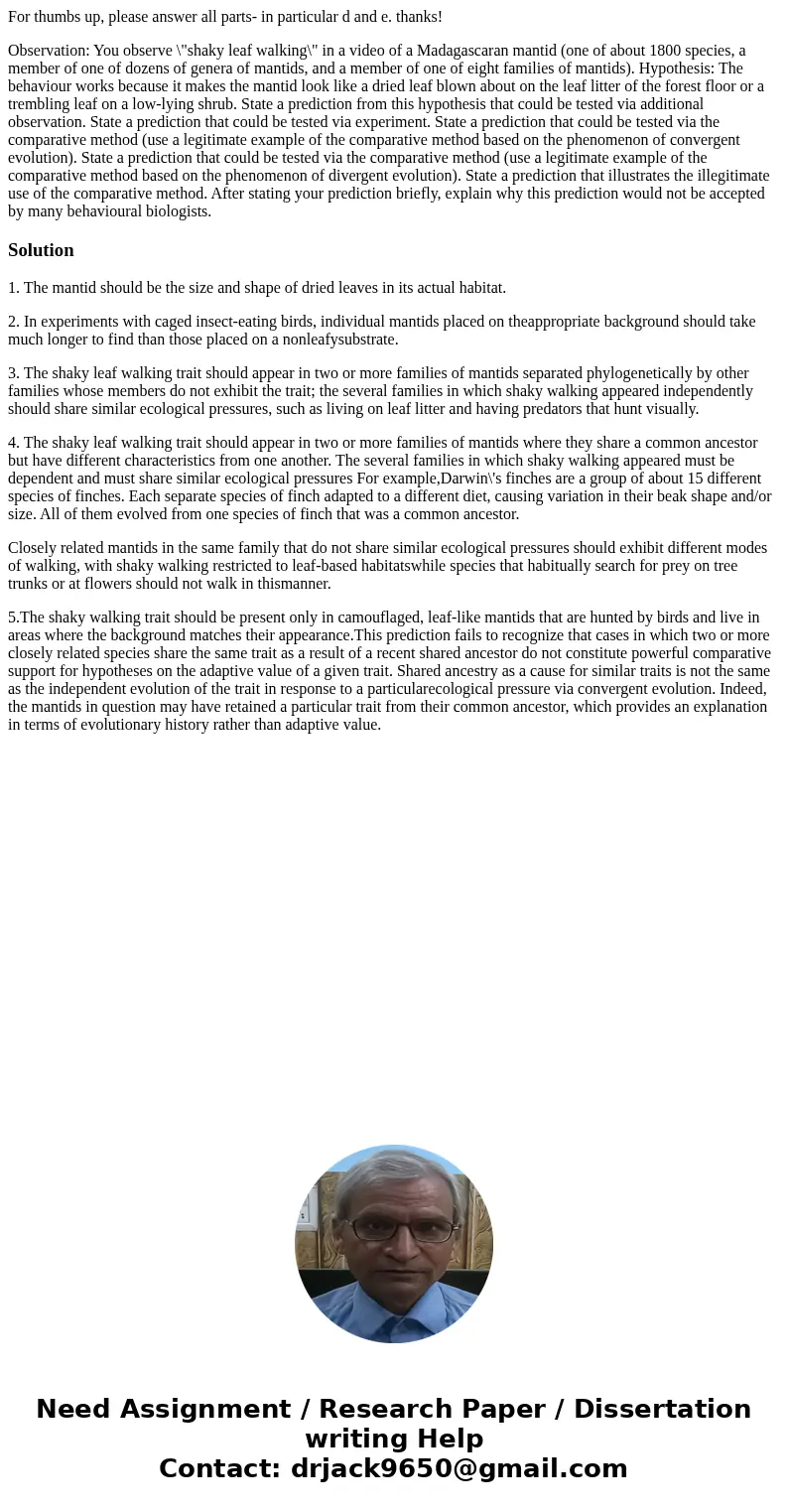For thumbs up please answer all parts in particular d and e
For thumbs up, please answer all parts- in particular d and e. thanks!
Observation: You observe \"shaky leaf walking\" in a video of a Madagascaran mantid (one of about 1800 species, a member of one of dozens of genera of mantids, and a member of one of eight families of mantids). Hypothesis: The behaviour works because it makes the mantid look like a dried leaf blown about on the leaf litter of the forest floor or a trembling leaf on a low-lying shrub. State a prediction from this hypothesis that could be tested via additional observation. State a prediction that could be tested via experiment. State a prediction that could be tested via the comparative method (use a legitimate example of the comparative method based on the phenomenon of convergent evolution). State a prediction that could be tested via the comparative method (use a legitimate example of the comparative method based on the phenomenon of divergent evolution). State a prediction that illustrates the illegitimate use of the comparative method. After stating your prediction briefly, explain why this prediction would not be accepted by many behavioural biologists.Solution
1. The mantid should be the size and shape of dried leaves in its actual habitat.
2. In experiments with caged insect-eating birds, individual mantids placed on theappropriate background should take much longer to find than those placed on a nonleafysubstrate.
3. The shaky leaf walking trait should appear in two or more families of mantids separated phylogenetically by other families whose members do not exhibit the trait; the several families in which shaky walking appeared independently should share similar ecological pressures, such as living on leaf litter and having predators that hunt visually.
4. The shaky leaf walking trait should appear in two or more families of mantids where they share a common ancestor but have different characteristics from one another. The several families in which shaky walking appeared must be dependent and must share similar ecological pressures For example,Darwin\'s finches are a group of about 15 different species of finches. Each separate species of finch adapted to a different diet, causing variation in their beak shape and/or size. All of them evolved from one species of finch that was a common ancestor.
Closely related mantids in the same family that do not share similar ecological pressures should exhibit different modes of walking, with shaky walking restricted to leaf-based habitatswhile species that habitually search for prey on tree trunks or at flowers should not walk in thismanner.
5.The shaky walking trait should be present only in camouflaged, leaf-like mantids that are hunted by birds and live in areas where the background matches their appearance.This prediction fails to recognize that cases in which two or more closely related species share the same trait as a result of a recent shared ancestor do not constitute powerful comparative support for hypotheses on the adaptive value of a given trait. Shared ancestry as a cause for similar traits is not the same as the independent evolution of the trait in response to a particularecological pressure via convergent evolution. Indeed, the mantids in question may have retained a particular trait from their common ancestor, which provides an explanation in terms of evolutionary history rather than adaptive value.

 Homework Sourse
Homework Sourse